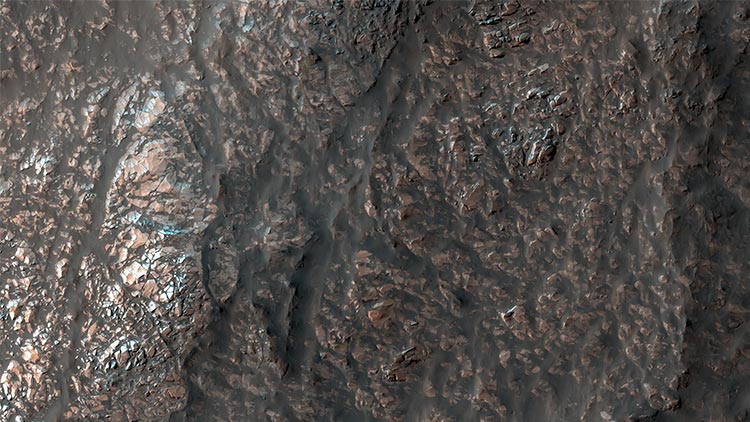#37 MARTIAN TERRAIN
Uplifted Bedrock in the Central Peak of an Impact Crater

Large impact craters expose deep bedrock. After the transient cavity forms, the crater floor rebounds and creates a permanent structural uplift, typically equivalent to about 10 percent of the crater diameter.
A crater approximately 70 kilometers (43 miles) wide like this one can raise up and expose bedrock that was approximately 7 kilometers (4 miles) lower in elevation prior to the impact. Deeper rocks are usually older, and on Mars the oldest rocks are interesting because they are more likely to have been altered by water and provide clues to ancient environments and processes.
This image reveals good bedrock exposures with diverse rock types (as indicated by colors and textures).
Written by: Alfred McEwen
A crater approximately 70 kilometers (43 miles) wide like this one can raise up and expose bedrock that was approximately 7 kilometers (4 miles) lower in elevation prior to the impact. Deeper rocks are usually older, and on Mars the oldest rocks are interesting because they are more likely to have been altered by water and provide clues to ancient environments and processes.
This image reveals good bedrock exposures with diverse rock types (as indicated by colors and textures).
Written by: Alfred McEwen





